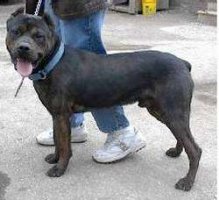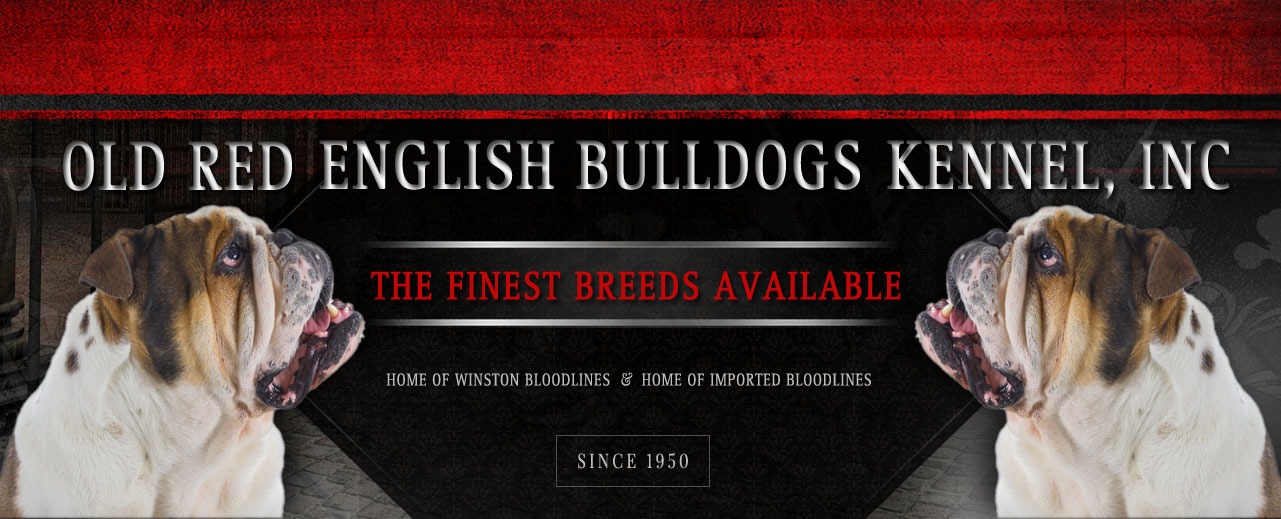
The American Mastiff Panja is a working dog known for its athletic, muscular body. It has a wide chest, muscular limbs, straight, well-boned legs, and slightly angled hocks. The breed features well-sprung ribs and a slight tuck-up. The eyes are small, almond-shaped, and convey an alert and inquisitive expression. The head is broad, and the ears are cropped short. The American Mastiff Panja has a dry mouth with no drooling, and its flews do not protrude. The coat is medium-length and flat, with variations in color. The breed’s tail is docked to one-third of its natural length. The American Mastiff (Panja) displays a curious and alert demeanor. Its small, almond-shaped eyes are wide-set, and the head is broad with a 60/40 ratio, being widest at the ears. The dog has a scissor bite, dry mouth, and non-protruding flews. While cropped ears are common, natural “button” ears are acceptable.
The American Mastiff (Panja) is a true working dog with the muscular physique of an athlete. It features a wide chest with well-sprung ribs and a slight tuck-up in the midsection. The front legs are straight and heavy-boned, while the hindquarters are very muscular, with slightly angled hocks that give the impression of instant action. Dewclaws are removed, and the dogs must maintain a clean presentation. The tail is docked to two-thirds of its natural length. The breed’s ears are “button” style, standing on their own with the top 1/4 to 1/3 of the ear turned forward.
Character
American Mastiff Panjas have a laid-back attitude and a leisurely temperament, making them excellent pets. They are deeply devoted and protective of their family, often forming strong bonds with their human companions. Especially those bred today, the breed tends to be terrific with small children. American Mastiff Panjas possess natural instincts that drive them to take responsibility for everything within their domain, believing it is their duty to protect their household and loved ones. Known for their intelligence, obedience training is recommended to prevent boredom and undesirable behaviors like chewing. As natural-born guard dogs, they are excellent at alerting their owners to any suspicious activity. While they are strong-willed leaders with a dominating persona, they are also kind and loyal companions.
Temperament
The American Mastiff (Panja) is a breed that thrives on firm leadership and structure within the household. While they have a laid-back attitude and make excellent, loyal companions, their strong guarding instincts and dominant personalities mean they need an experienced handler who can establish themselves as the pack leader. Obedience training is crucial, and proper socialization from a young age will help them be well-behaved around children and other pets. They love being around their family and are active and playful, making them great travel companions. However, they require a confident owner who can maintain authority, as they have a natural instinct to protect their home and loved ones.
History
The American Mastiff (Panja) originated in Detroit’s Metro area as a result of crossing several breeds, including Pit Bull Terriers, Rottweilers, and Bandogs. Over time, other breeds such as Bullmastiffs, American Bulldogs, Cane Corsos, Dobermans, and Presa Canarios have reportedly contributed to the breed’s development. The modern Panja Mastiff is more uniform in appearance and has a specific breeding “recipe” to achieve its distinctive traits. Unlike the “warlock” bandog, which is a first-generation Pit Bull Terrier and Rottweiler cross, the Panja Mastiff can be created by either crossing two warlocks or through planned matings of full Panja Mastiffs with Rottweilers.
The Detroit Rock Dog, often linked with drug dealers and gangsters, was initially used as a guardian of property and a pit-fighting dog. Its role as a “bodyguard” helped establish the Panja’s reputation as a personal protection breed. Despite its rough origins and association with darker elements, the breed has grown in popularity thanks to responsible breeders focused on producing dogs with stable temperaments and friendly personalities. However, potential owners are advised to carefully research breeders and avoid bloodlines known for aggressive tendencies or poorly bred first-generation crosses, which are still prevalent in some Panja lines today.
The American Panja Mastiff takes its guarding duties seriously and can be prone to dog aggression, which is why proper training and socialization are essential. When handled correctly, it can be a well-behaved, loyal, and dependable companion. The breed is athletic and agile, with a wide chest and muscular build, yet it remains affectionate and gentle with children, making it an excellent family dog. Although variations still exist due to different breed influences in certain bloodlines, most Panja Mastiffs are strong-boned, broad-headed, and capable of moving easily. The breed’s ears may be cropped or left natural, and while many have docked tails, unaltered dogs are also commonly seen.
The coat of the American Panja Mastiff is flat and short, yet dense and thick, providing good protection. It comes in a variety of colorations, including solid fawn, red, and black shades, as well as various bicolors. These can include white-based particolored dogs with darker markings, black-and-tan, and even tricolored specimens.
Height
22 – 26 inches (56 – 66 cm)
Weight
80 – 100 pounds (36 – 45 kg)
General Health
The American Mastiff Panja is generally a healthy breed with no major health concerns, although, like other large dogs, it may be prone to conditions such as hip dysplasia. With proper care, the breed typically lives for 10 to 12 years. Regular exercise, a balanced diet, and routine veterinary care are important for maintaining their health.
Grooming
The American Mastiff (Panja) has a medium-length, flat coat with a seasonal undercoat that grows in the winter. Regular brushing, especially during shedding seasons, will help control loose hairs, though overall shedding is minimal. Grooming needs are not particularly demanding; a good bath and rub-down once a month will suffice to maintain their coat in excellent condition.
Maintenance
American Mastiff Panjas have a medium-length, flat coat that requires minimal grooming. While they shed very little, daily brushing helps to manage stray hairs. Occasional baths or dry shampoo can be used as needed to keep them clean and comfortable.
Ideal Environment
The American Mastiff Panja can adapt to living in a small household or apartment, provided they are given enough exercise. Though they tend to be inactive indoors and may become lazy, it’s crucial for owners to encourage physical activity. Because they don’t like being left alone, using a crate when the owners are away is often recommended. This breed can handle a variety of climates and weather conditions, but they do need at least a small yard. Daily walks are ideal to keep them healthy and satisfy their athletic needs.
These are the Bulldogs and Mastiffs we breed and sell.
The pictures on each page are for identification purposes and OldBulldogs.com does not own every animal pictured. These pages are informational and intended to describe the standards of each breed.
- Alano Español
- Alapaha Blue Blood Bulldogs
- American Bandogge Mastiffs
- American Bully-Bullies
- American Pit Bull Terriers
- American Staffordshire Bullies
- American Staffordshire Terriers
- Arkansas Giant Bulldogs
- Australian Bandogge Mastiffs
- Australian Bulldogs
- American Bulldogs-Old Time Southern Bulldogs-Old Southern Whites
- Banter Bulldogs
- Boxer Bulldogs
- Bull Terriers
- Bull Mastiffs
- Miniature Bull Terriers
- Mexican Bulldogs
- Miniature English Bulldogs
- Neapolitan Mastiffs
- Old Boston Bulldogs
- Olde English Bulldogges
- Old Victorian Bulldogs
- Patterdale Terrier
- Perro de Presa Canario
- Performance-Standard Type American Bulldogs
- Perro de Presa Mallorquin
- Panja Mastiffs
- Renascence Bulldogs
- South African Boerboel
- Staffordshire Bull Terriers
- Saint Bernard
- Valley Bulldogs
- Winston Working Bulldogs
- Winston’s Working Mastiffs
- Winston’s Working Terriers
- Winston’s Working Hounds
- Winston’s Working Shepherds
